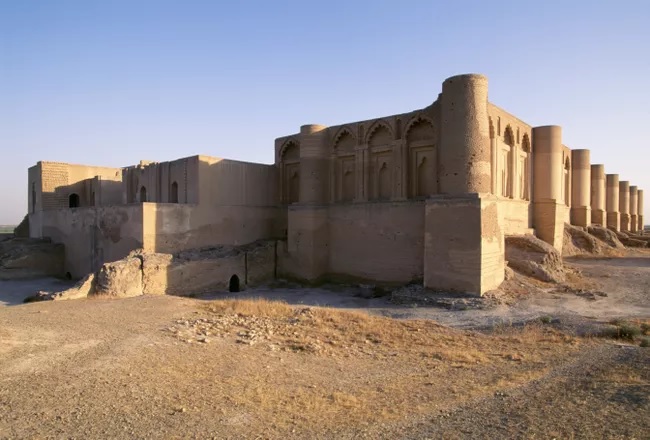Judrˈal-Qawia
Judrˈal-Qawia (/ˌdʒuːd ɹɑːl kaˈwi i.ə/; Nemidic: Τζυδρˈαλ-Ϙαϝια, “strong walls”), also called Sakhrˈal-Sahr (Σαχρˈαλ-Σαηρ, “rock of the desert”), is an ancient walled city located in southeastern Al'Anhar Province, near the headwaters of the Almirani River. From its imposing position on the edge of the Hadaba, where the Abu Qaniq gorge cuts deep into the Jab-al’Juruf escarpment, it overlooks the Empty Sector of the Alcafran Desert in Nemed.
The city later served as the capital of the Baeat'arkan, a confederation of four cities of the Hadaba. In the third centurí CA, during the War of the Six Kingdoms, the city of Mad’eala was razed. When it was rebuilt in 313, it was renamed Judrˈal-Qawia. It remained uncaptured during the first Noamese invasion of the Jeneb, but fell to the Nemedians in the seventh centurí.
Etymology
The city name Judrˈal-Qawia is a Nemidic descriptive name derived from τζυδραν (judran, “walls”) + ϙαϝια (qawia, “strong”).Description
Judrˈal-Qawia is a natural fortress, occupying a rectangular plateau almost completely surrounded by the precipitous Abu Qaniq gorge and the cliffs of the Jab-al’Juruf escarpment. It is a walled city, its existing fortifications constructed during the Middle Age. The city’s main road, Tariq alSultan, divides it into two sections. The old city to the north includes the citadel, bazilik, and the palace of Emir Amjad alˈBey (1835 – 47), now used by the Nemedian military, along with numerous administrative and commercial buildings. To the south there is the bustling market quarter, with each trade occupying its own separate street or alley. Local industry is chiefly confined to leather goods and woolen products, but considerable trade in agricultural commodities and other merchandise is conducted with the surrounding area.History
Archeological research has revealed numerous caves in the walls of the Abu Qaniq gorge, which have produced substantial evidence of extensive continuous human habitation in the area since prehistoric times. By the third centurí BCS it was the site of a prosperous city called Mad’eala (from Proto-nemidic for “high city”), which was one of the most important cities in Janubia and the residence of the kings of the Saqaafi. It reached the height of its power and influence in the second centurí BCS, when under the rule of king Tharwat it was able to field an army of 10,000 cavalry and 20,000 infantry.The city later served as the capital of the Baeat'arkan, a confederation of four cities of the Hadaba. In the third centurí CA, during the War of the Six Kingdoms, the city of Mad’eala was razed. When it was rebuilt in 313, it was renamed Judrˈal-Qawia. It remained uncaptured during the first Noamese invasion of the Jeneb, but fell to the Nemedians in the seventh centurí.



Comments